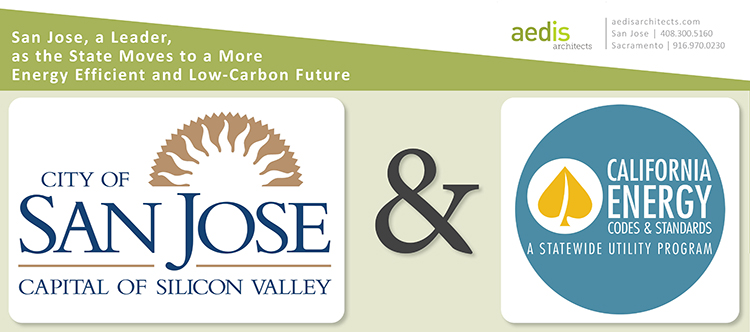
Local Amendments to the State Codes
In general, a Reach Code is a local amendment to the California Building Standards Code. In California, local governments have the authority to adopt amendments to the Code, commonly known as “Title 24” of the state’s Code of Regulations. In this article, we are talking about Reach Codes that apply to Title 24, Part 6 – California Energy Code. Since 1978, California’s Energy Code has reduced wasteful and unnecessary energy consumption in newly constructed and existing buildings. It is updated every three years. Non-residential buildings built under the current 2019 version are about 30% more efficient than those governed by the 2016 code. Residential buildings are about 53% more efficient.
Local amendments are often referred to as Reach Codes because they require performance that exceeds that of the minimum state code, in advance of its future updates. Today, these codes only affect Aedis’ projects governed by the local jurisdictions, such as San Jose, and Palo Alto. On our public-school projects, the Division of the State Architect enforces the basic Title 24, Part 6 (the Energy Code), and Part 11 (CALGreen or “the Green Code”). All local jurisdictions enforce Part 11, also.
There are two categories of Reach Codes:
Through a series of calculations, the performance approach achieves compliance by showing that a building’s proposed energy budget (energy consumption per square foot of floor space) is equal to or better than an established enhanced baseline, allowing developers freedom in their designs. This baseline varies by climate zone and building type, so the standards are matched to local conditions.
As of December 2020, at least 29 California jurisdictions have passed local Reach Codes. Notably, these have been in large metropolitan areas–like the City of Los Angeles and across the Bay Area, affecting a vast population–and smaller communities such as Lancaster and Davis.
San Jose’s Goal of Zero-Emission All-Electric Buildings
San Jose’s Reach Code establishes an augmented standard for new construction to be zero-emission all-electric buildings, encouraging the specification of electric equipment such as space heating, water heating, cooktops, and so on. The Reach Code falls short of an outright ban on gas and gas equipment. Buildings designed with gas must still comply with prescriptive measures that make the building capable of being all-electric in the future. They are also burdened with a more energy-efficient baseline to be considered Code compliant.
More information about San Jose’s Reach Code can be found here: https://rb.gy/pkolvn